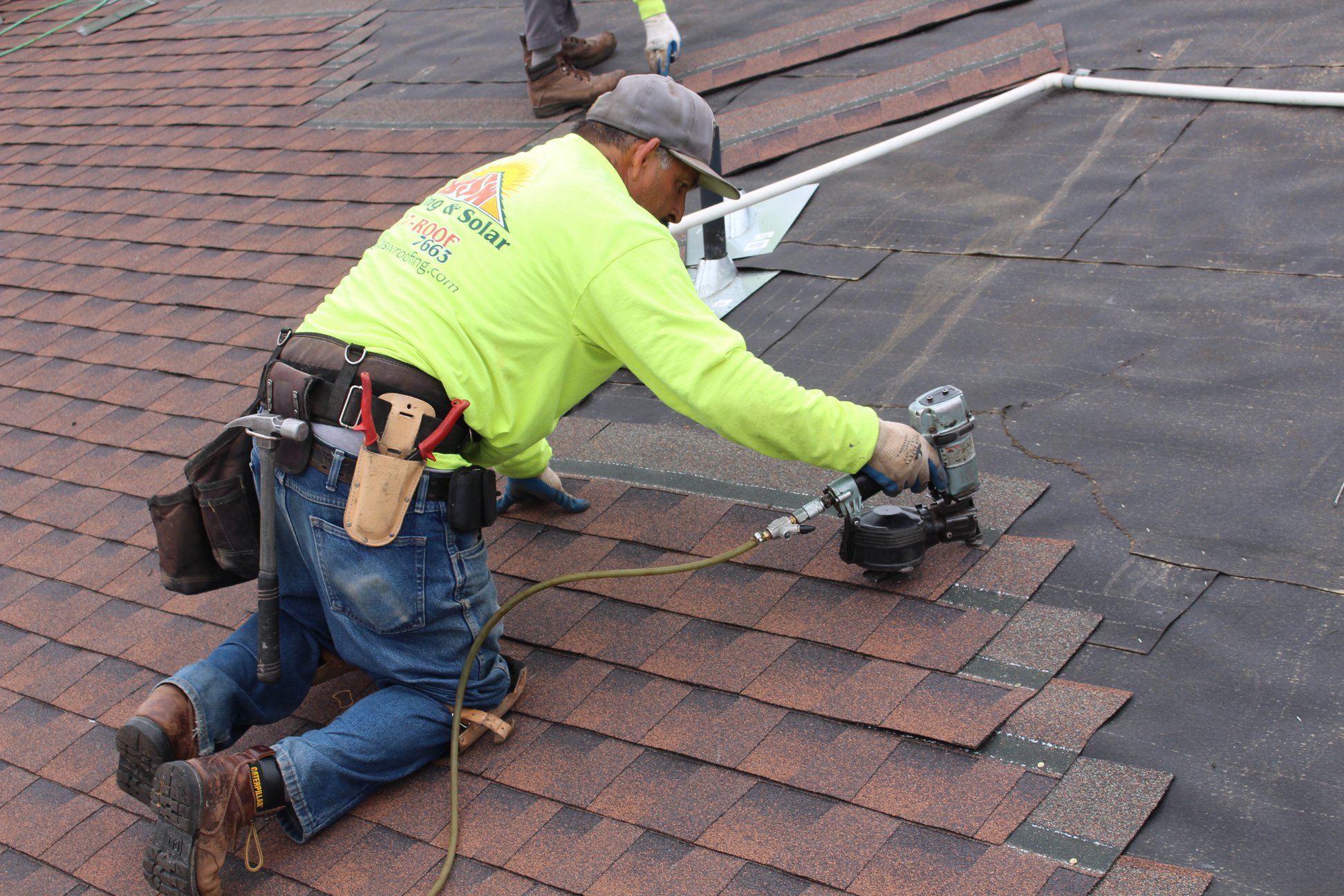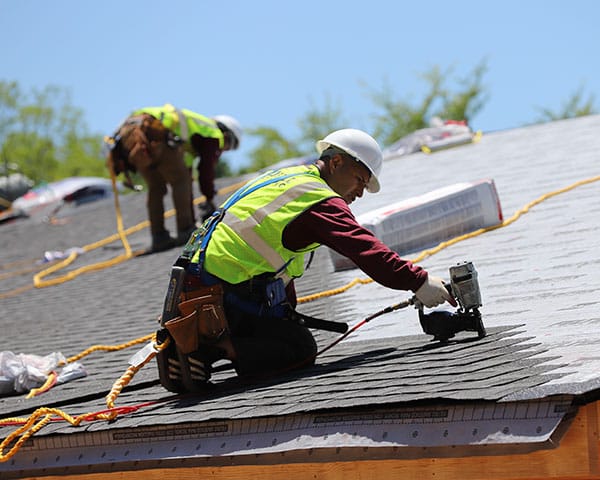Comparing Prices Among Roofing Companies in Gainesville Florida
Comparing Prices Among Roofing Companies in Gainesville Florida
Blog Article
Finest Practices for Ensuring Correct Roof Ventilation
A well balanced consumption and exhaust air vent ratio, frequently 1:300, plays a critical function, with intake vents preferably placed at the reduced side of the roof for amazing air entrance and exhaust vents at the optimal for cozy air leave. Maintaining insulation away from vents is crucial to prevent airflow limitation.
Understand Air Flow Essentials
Appropriately understanding ventilation essentials is important for making sure the durability and effectiveness of roof systems. Efficient ventilation reduces wetness build-up and temperature extremes in the attic, both of which can result in substantial architectural damages over time. A well-ventilated roof helps in protecting against typical problems such as mold and mildew growth, timber rot, and ice dams, which can jeopardize the stability of the roof covering materials and the underlying structures.
The key goal of air flow is to facilitate the movement of air, enabling a consistent exchange between the outdoor and indoor settings. This equilibrium is attained with a combination of intake and exhaust vents that interact to preserve optimum air movement. Consumption vents, commonly situated along the eaves or soffits, enable fresh air to get in the attic room area, while exhaust vents, often situated at or near the roofing system ridge, make it possible for hot, moist air to run away.
Key variables affecting the efficiency of roofing system ventilation consist of appropriate positioning, sufficient sizing, and making sure that both consumption and exhaust vents are unblocked. Normal examination and maintenance are crucial to recognize possible obstructions, damage, or ineffectiveness in the air flow system, thereby guarding the roof's performance and resilience.
Sorts Of Roofing Vents
Roof vents play a crucial duty in keeping efficient attic room ventilation and, by extension, the overall health of the roof system. Numerous kinds of roof covering vents are offered, each with one-of-a-kind advantages customized to particular roof covering demands. Ridge vents, for instance, are installed along the roof's peak, enabling cozy, damp air to leave from the attic room. They offer continuous air flow and blend seamlessly with the roofline, making them both efficient and visually pleasing.

Soffit vents are mounted under the eaves and operate in tandem with roof vents to guarantee a well balanced intake and exhaust system. By allowing cooler air to go into from below, soffit vents facilitate the expulsion of hot air through top vents. Gable vents, situated on the outside walls of the attic, deal an additional reliable option, particularly in homes with saddleback roofs.
Analyze Your Existing Air Flow

Following, think about the age and condition of your roof covering materials and air flow parts. Older systems might not abide by present building regulations or may have worn away gradually, lowering their efficiency. Conduct a detailed assessment to recognize any kind of indications of wear and tear, such as corrosion, damages, or spaces that can compromise the system's performance.
Additionally, measure the attic room temperature and humidity levels. High temperature levels and moisture can show inadequate ventilation.
Installment Best Practices
Efficient installment of roofing ventilation systems is paramount for making certain ideal performance and longevity. Proper installment begins with recognizing the certain air flow requirements of the roof and the structure it covers. This involves calculating the correct ratio of intake to wear down vents, commonly sticking to the 1:300 rule, which specifies one square foot of air flow for each 300 square feet of attic floor area.

Consumption vents ought to be mounted at the roof covering's lower edge, usually in the soffits, to permit awesome air to go into. Exhaust vents, on the other hand, should be set up near or at the roofing's top to help with the exit of warm, wet air.
Seal all vent links meticulously to stop air leaks and prospective water seepage. Use high-quality materials and comply with manufacturer standards to make certain resilience and efficiency. Furthermore, integrating ridge vents with baffles can substantially improve air movement effectiveness by protecting against wind-driven rainfall and snow from getting in the attic room.
Eventually, specific setup of roof covering air flow systems mitigates prospective concerns such as mold and mildew development, ice dams, and architectural damage, making sure the roofing's honesty and the building's general health and wellness.
Routine Upkeep Tips
Consistency in upkeep methods is essential to ensuring the long-term performance of roofing ventilation systems. Routine assessments are vital, ideally executed biannually-- in the springtime and fall. During these examinations, make sure that vents are complimentary of particles, nests, and various other blockages that might hinder air flow. Look for any indicators of dampness buildup or mold and mildew, as these can suggest incorrect air flow or leakages (roofing companies).
Cleaning up the vents is another essential job. Use a soft brush or a vacuum cleaner to eliminate dirt and debris from intake and exhaust vents. Beware not to damage the air vent screens or louvers throughout the process. Additionally, check the attic room area for any kind of signs of water damage, which can compromise the integrity of the roof system.
Proper insulation is equally vital. Guarantee that attic insulation does not block the vents, as this can drastically restrict airflow. Rearrange or change it to maintain these details an effective barrier. if any type of insulation has changed or settled.
Lastly, replace any type of damaged or missing components without delay. Damaged vents, split tiles, or scrubby flashing can all contribute to insufficient air flow and should be dealt with immediately. Routine upkeep makes sure that the roof covering air flow system functions optimally, therefore extending the life-span of the roofing itself.
Conclusion
Making sure appropriate roof ventilation is paramount for keeping the effectiveness and toughness of a roof system. Adherence to the 1:300 intake and exhaust air vent ratio, coupled with the strategic positioning of vents, is vital. Regular semiannual assessments, debris cleaning, and making certain insulation does not block airflow are critical methods. Carrying out these ideal methods will promote a well-ventilated roofing system, therefore alleviating potential concerns connected to moisture accumulation and excessive warmth, eventually prolonging the roofing's life expectancy.
A balanced consumption and exhaust air vent ratio, commonly 1:300, plays an essential duty, with intake vents ideally placed at the lower side of the roof for great air entrance and exhaust vents at the optimal for warm air departure. Intake vents, usually situated along the eaves or soffits, allow fresh air to get in the attic room space, while exhaust vents, commonly located at or near the roofing system ridge, make it possible for warm, humid air to leave.
Soffit vents are installed under the eaves and work in tandem with roofing vents to make certain a balanced consumption and exhaust system. By permitting cooler air to enter from below, soffit vents help you can try this out with the expulsion of hot air through upper vents. Adherence to the 1:300 intake and exhaust vent ratio, coupled with the tactical placement of vents, is necessary.
Report this page